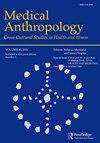Between Deserts and Jungles: The Emergence and Circulation of Sylvatic Plague (1920-1950).
IF 1.5
3区 社会学
Q2 ANTHROPOLOGY
引用次数: 0
Abstract
I trace the development of the concept of sylvatic plague - the first sylvatic disease - examining its invention by Ricardo Jorge to describe a global phenomenon of plague reservoirs among wild rodents, and its circulation. The concept implied a space where plague was enzootic, and relied on a division between inhabited and uninhabited spaces and between domestic rats and wild rodents. Some of the characteristics of this space varied, but it always referred to places imagined as empty of humans and rats. In 1927, it designated ambiguously deserts, in 1935, uninhabited regions in general, and in Brazil, it referred to the jungle.
沙漠与丛林之间:西尔瓦特瘟疫的出现与传播(1920-1950)。
我追溯了森林瘟疫概念的发展——第一种森林疾病——通过里卡多·豪尔赫的发明来描述野生啮齿动物中瘟疫库的全球现象及其传播。这一概念意味着瘟疫是地方性的,并依赖于有人居住和无人居住空间之间以及家鼠和野生啮齿动物之间的划分。这个空间的一些特征各不相同,但它总是指那些被想象为没有人和老鼠的地方。1927年,它指定了模糊的沙漠,1935年,指定了一般无人居住的地区,在巴西,它指的是丛林。
本文章由计算机程序翻译,如有差异,请以英文原文为准。
求助全文
约1分钟内获得全文
求助全文
来源期刊

Medical Anthropology
Multiple-
CiteScore
4.10
自引率
4.30%
发文量
57
期刊介绍:
Medical Anthropology provides a global forum for scholarly articles on the social patterns of ill-health and disease transmission, and experiences of and knowledge about health, illness and wellbeing. These include the nature, organization and movement of peoples, technologies and treatments, and how inequalities pattern access to these. Articles published in the journal showcase the theoretical sophistication, methodological soundness and ethnographic richness of contemporary medical anthropology. Through the publication of empirical articles and editorials, we encourage our authors and readers to engage critically with the key debates of our time. Medical Anthropology invites manuscripts on a wide range of topics, reflecting the diversity and the expanding interests and concerns of researchers in the field.
 求助内容:
求助内容: 应助结果提醒方式:
应助结果提醒方式:


